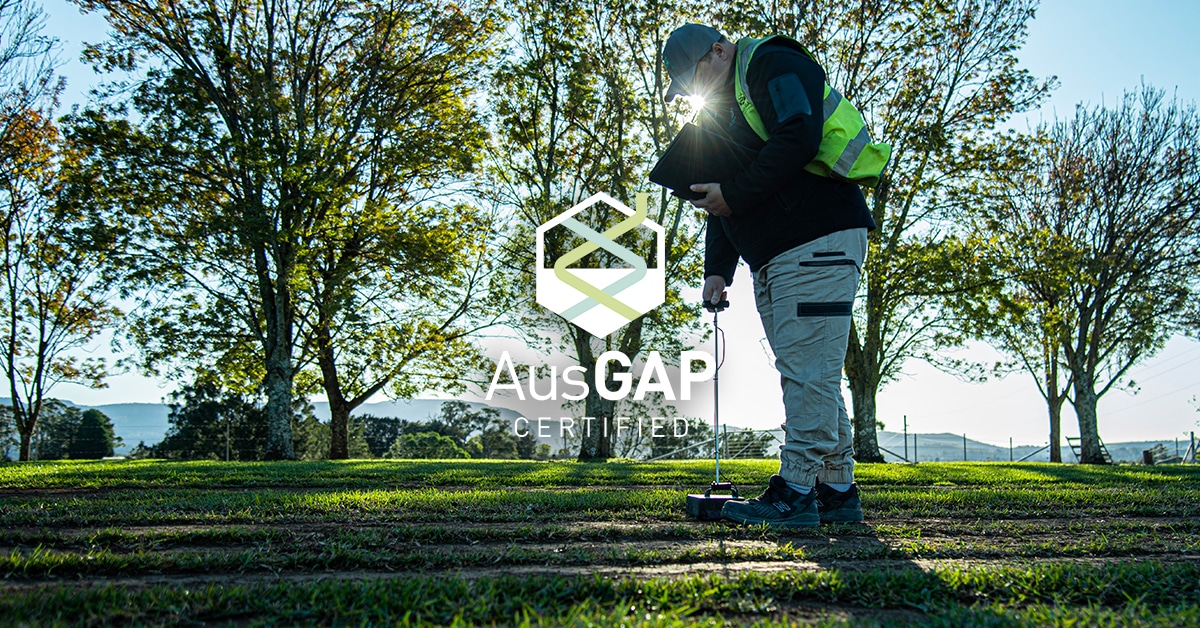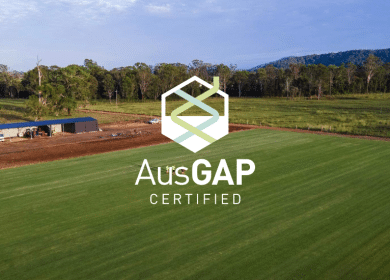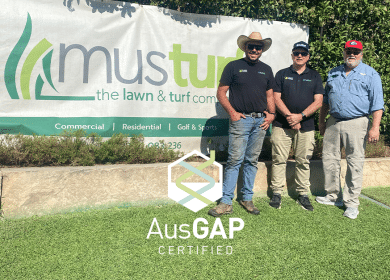Environmental and sustainability standards set by AusGAP

The turfgrass industry plays an important role in shaping the aesthetic and recreational aspects of our communities. As the industry continues to grow and evolve, it is becoming increasingly important to ensure that the production and management of turfgrass is sustainably and environmentally responsible. This is where turf certification program, AusGAP, come in setting environmental and sustainability standards for it certified turf producers.
AusGAP – Australia’s leading turf certification program, set environmental and sustainability standards that turf farms must meet in order to produce certified turfgrasses. These standards cover a range of areas, including biosecurity, waste management and environmental policies. Thus, by adhering to these standards, producers of certified turf are able to minimise their impact on the environment and ensure that their products and services are sustainable for future generations.
Why is certified turf needed?
Certified turfgrass are of a higher quality than uncertified products. The strict standards set by AusGAP ensure that only the best turfgrass is produced, providing customers with the assurance that they are getting a high-quality product that meets strict environmental and sustainability standards and is being responsibly produced.
What are the environmental standards AusGAP is setting?
AusGAP has established environmental standards to promote sustainable practices and ensure the long-term viability of the turfgrass industry. For example, these standards encompass environmental awareness, biosecurity measures, and responsible waste management. The following measures are required of growers to comply with AusGAP standards.
Documented environmental policy
Growers must have a documented environmental policy in place that emphasises ecological awareness, minimises adverse impacts on the environment, promotes minimal energy use, and encourages responsible waste management. The business must communicate this policy to all employees to ensure its implementation throughout the business.
Farm biosecurity policy
To mitigate the potential contamination of weeds, diseases, pests, or other pathogens, the business must develop a farm biosecurity policy or statement. For example, this includes implementing protocols to minimise risk of contamination from the movement of people, vehicles, and equipment to and from the farm. Additionally, it may be necessary to establish quarantine protocols. Furthermore, prominent signage displaying farm biosecurity information must be visible at all farm entrances. The signage should clearly communicate the need for visitors to respect biosecurity measures and instruct them to contact the farm manager before entering.
Record keeping
There must be a record of all brought in turfgrass material, fertilisers, manures, or other crop inputs, specifying their source and application areas. This record keeping practice is essential for establishing a quarantine area if required by AusGAP.
Machinery and equipment cleaning
Procedures and facilities should be in place for cleaning machinery and equipment that could potentially carry contaminates. Furthermore, clear signage should be visible at wash down bays, reminding personnel of the importance of proper cleaning to prevent the spread of diseases, weeds, pests, and other pathogens.
By implementing these standards, AusGAP aims to promote environmentally responsible practices within the turfgrass industry, minimise the risk of contamination, and contribute to the overall sustainability of turfgrass production.
How does this promote sustainability in the turfgrass industry?
AusGAP standards serve as a benchmark for best practices in the turfgrass industry. They provide a clear framework and guidelines for growers to follow, ensuring their operations meet or exceed the set environmental and sustainability standards. AusGAP’s standards have a positive influence on the turfgrass industry by establishing a benchmark for best practices, ensuring consistency and quality, promoting conservational awareness and education, driving industry wide adoption of sustainable practices, and meeting consumer demand for environmentally responsible standards.
The standards set by AusGAP play a critical role in ensuring that the production and management of turfgrass are sustainable and environmentally responsible. By adhering to these standards, producers of certified turf are able to minimise their impact on the environment and ensure that their products are of the highest quality.


